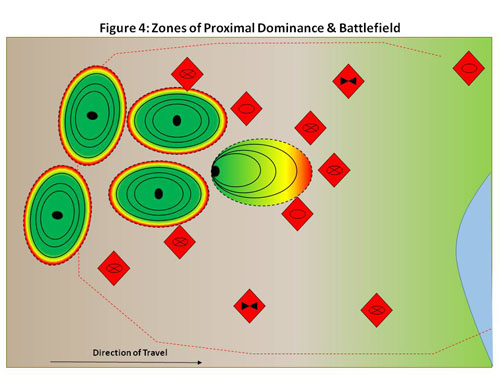Small Wars Journal has published an insightful essay by U.S. Army Major Amos Fox, “Multi-Domain Battle: A Perspective on the Salient Features of an Emerging Operational Doctrine.” Fox is a recent graduate of Army’s School of Advanced Military Studies (SAMS) and author of several excellent pieces assessing Russian military doctrine and its application in the Ukraine.
Drawing upon an array of sources, including recent Russian military operations, preliminary conceptualizations of MDB, Carl von Clausewitz, J.F.C Fuller, and maneuver warfare theory, Fox takes a crack at shaping the parameters of a doctrine for Multi-Domain Battle (MDB) operations on land. He begins by summarizing how MDB will connect operations to strategy.
Current proponents suggest that [MDB] will occur against peer competitors in contested environments, providing the US Army and its joint partners with a much thinner margin of victory than in the recent past. As such, US forces should look to create zones of proximal dominance to enable the active pursuit of objectives and end states, and that dislocation is the key to defeating an adversary capable of multi-domain operations.
The essence of MDB will be a constant struggle for battlespace dominance, which will be “fleeting, fragile, and prone to shock or surprise.” Achieving temporary dominance only establishes the pre-conditions necessary for closing with and destroying enemy forces, however.
Fox suggests envisioning the cross-domain, combined arms, and individual arms of ground forces (i.e. direct fire weapons, indirect fire weapons, cyber, electronic, information, reconnaissance, et cetera) as “zones of proximal dominance” or “as an orb of power which radiates from a central position.” Long-range weapons perform a protective function and form the outer layers of the zone, while shorter-range weapons constitute the fighting functions.
[O]ne must understand that in multi-domain battle they must first strip away, or dislocate, the protective layers of an enemy’s force in order to destroy its strength, or its inner core. In the cross-domain environment, an enemy’s outer core is its cross-domain and joint capabilities. Therefore, the more of the enemy’s outer can be cleaved away or neutralized, the more success friendly forces will have in defeating the enemy’s main fighting force. Dislocating the outer layers and destroying the inner core will, in essence, defeats the cross-domain enemy.
Dislocation is a concept Fox adopts from maneuver warfare theory as “a critical component of defeating an enemy with cross-domain capabilities because it denies the enemy access to its tools, renders those tools irrelevant, or forces the enemy into environments in which those tools are ill-disposed.”
Fox’s perspective is well informed and logical, but exploration of the implications of MDB are in the earliest stages. The essay is a fascinating and highly-recommended read.


I completely agree Shawn – a great read. I think it is modern view of the idea of ‘surfaces’ and ‘gaps’ in the battlefield, but also points at the relationship between geography (distance / proximity) and control. It reminded me a lot of the idea posed by Kenneth Boulding in ‘Conflict and defense’, the loss of strength gradient, which explains loss of military power over distance and is a validation of control over territory. A topic I hope to write about at Logistics In War.
I look forward to reading your thoughts on that.
I was quite taken with MAJ Fox’s graphics, which really help illustrate his ideas. In particular, I liked Figure 3, which showed how the zones of proximal dominance stretched through the support area, to the close area, and out to the deep area. It gives a very good sense, I think, of how MDB will extend throughout the battlespace.
It also makes me wonder if new operational graphics will have to be developed to more fully convey the three-dimensional nature of the MDB battlespace.